By Dr. Zach Skurski
Board Certified Ophthalmologist, Cornea and Refractive Surgery Specialist
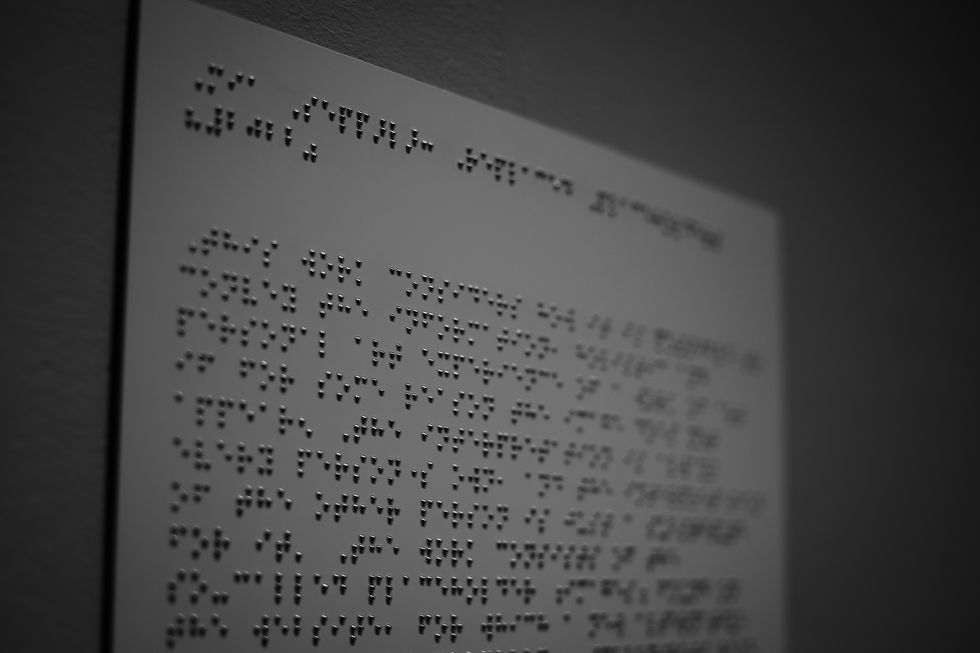
Across the world, 2.2 billion people have vision impairment and in at least 1 billion of these people, the condition could have been prevented or treated.
Cataract and refractive error are the leading causes of vision impairment and blindness globally.
In the US, over 1 million people over 40 years old are blind, while 2.4 million are visually impaired. According to the NIH, this is expected dramatically rise with the aging Baby Boomer population,.
Leading Causes of Blindness
Blindness is a profound and life-altering condition that affects millions of people worldwide. In the United States alone, vision impairment is a significant public health concern and impacts the lives of many individuals and their families. While advancements in medicine have made it possible to prevent or treat several causes of blindness, there are still leading causes that continue to challenge healthcare providers and researchers. In this article, we'll take a look at the top seven leading causes of blindness in the United States, exploring their causes, risk factors, prevention, and available treatments.
Contents
1. Diabetic Retinopathy
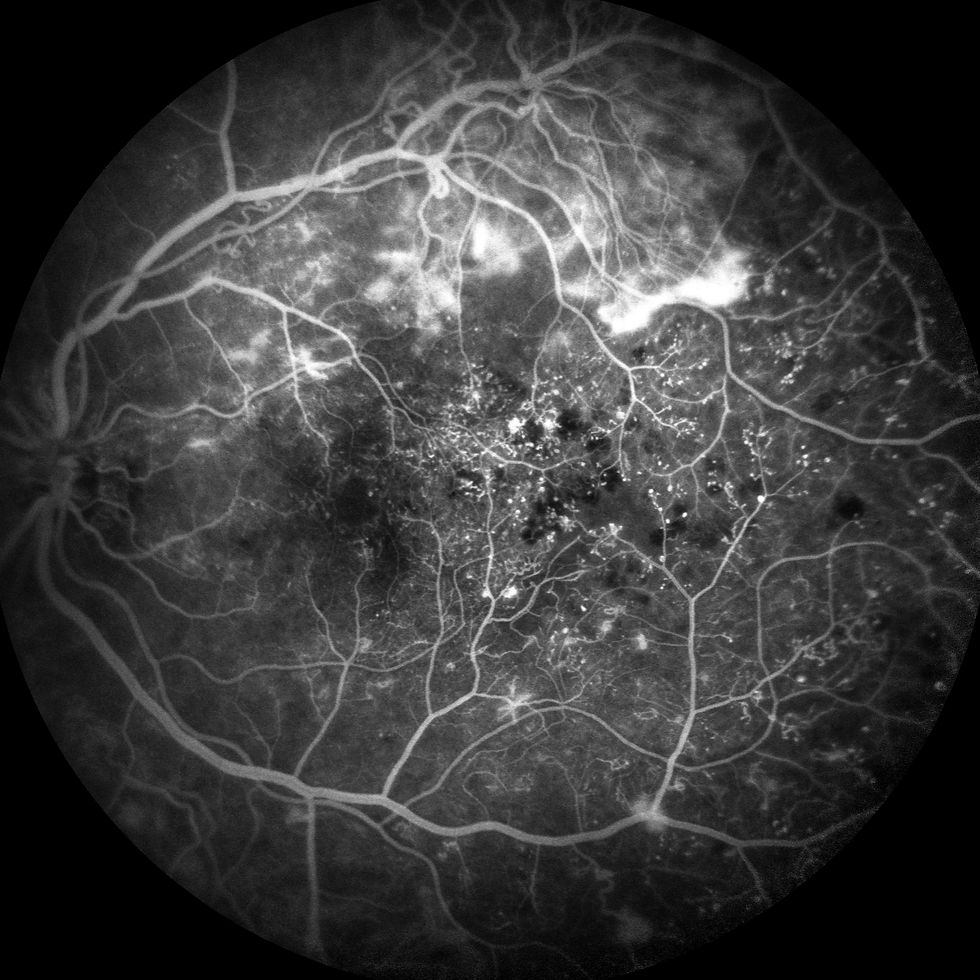
With the growing health trends and rise in diabetes, diabetic retinopathy is a common and leading cause of vision impairment. Diabetic retinopathy is a complication of diabetes that affects the blood vessels in the retina. Diabetes essentially makes small blood vessels become leaky an ineffective, which affects the eyes early in the disease. It is one of the leading causes of blindness among working-age adults in the United States.

Causes: Prolonged high blood sugar levels in people with diabetes can damage the blood vessels in the retina, leading to diabetic retinopathy. Poorly managed diabetes and long-duration diabetes are significant risk factors.
Prevention: The most effective way to prevent diabetic retinopathy is by managing blood sugar levels through a healthy lifestyle, regular medical check-ups, and following the prescribed treatment plan for diabetes.
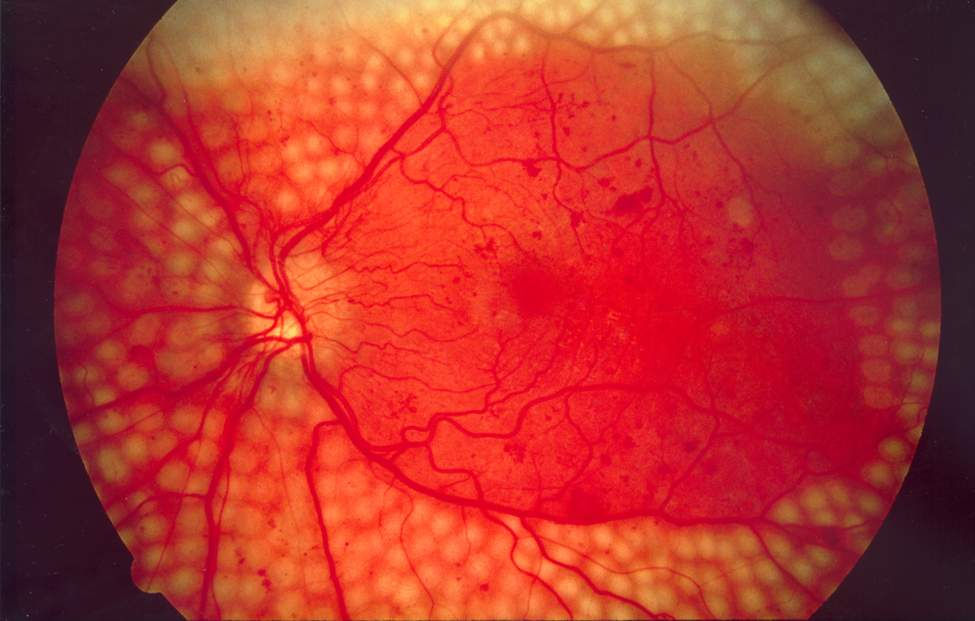
Treatment: Treatment options for diabetic retinopathy include laser therapy, injections of medications into the eye, and surgery in advanced cases. Early detection and intervention are crucial to preserving vision.
2. Age-Related Macular Degeneration (AMD)
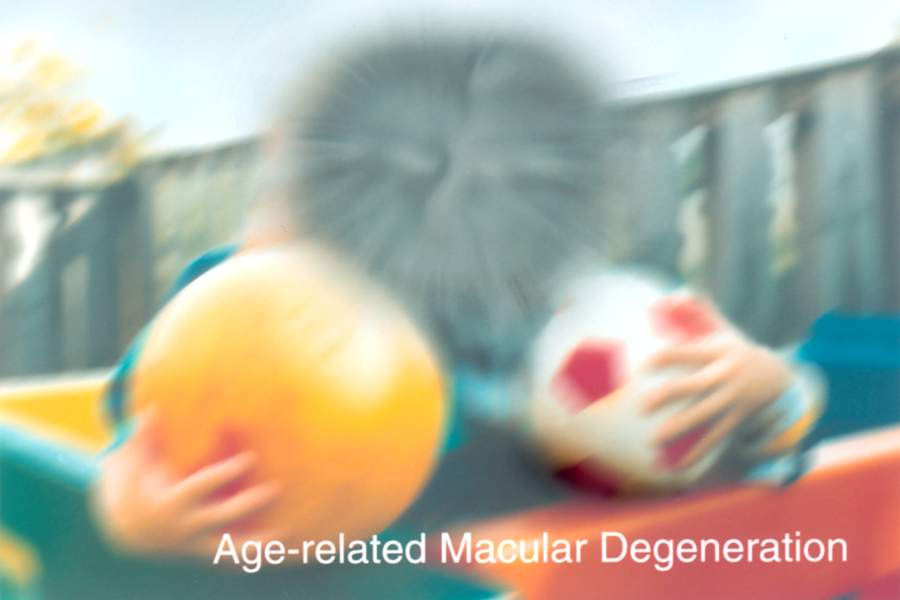
Age-related macular degeneration, often abbreviated as AMD or ARMD, is the leading cause of blindness in older adults in the United States. As the named, this condition primarily affects the macula, the part of the retina (inner nerve lining of the eye) responsible for sharp central vision. AMD comes in two forms: dry (atrophy or thinning) AMD and wet (neovascular, fluid collection) AMD.
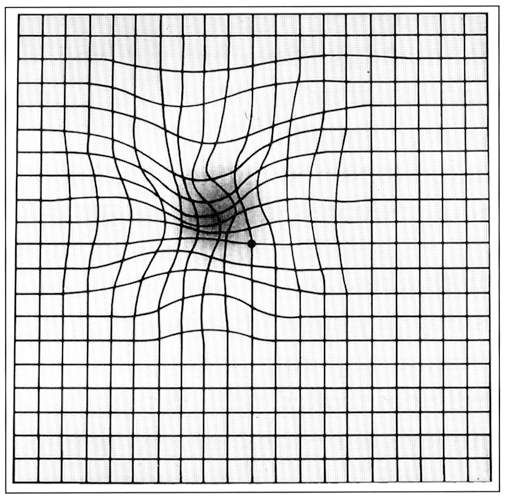
Causes: The exact cause of AMD is not fully understood, but genetics and age are the primary risk factors. Smoking, high blood pressure, and a diet lacking in antioxidants may also contribute to its development.
Prevention: Regular eye exams, a healthy diet rich in vitamins and minerals (especially antioxidants), not smoking, and managing conditions like hypertension can reduce the risk of AMD. Eye vitamins in a form known as AREDS 2 (Age Related Eye Disease Study 2), have been shown to slow, and potentially stop the progression of intermediate macular degeneration into advanced stages. Patients are frequently provided with Amsler grid's by their ophthalmologist to screen for any changes or new symptoms as illustrated in the image above.
Treatment: Treatment options for AMD vary depending on the form. While there is no cure for dry AMD, certain dietary supplements (AREDS 2) and lifestyle changes may slow its progression. Wet AMD can be treated with anti-VEGF (vascular endothelial growth factor) injections, photodynamic therapy, or laser therapy, which can help manage symptoms and prevent further vision loss.
3. Glaucoma

Glaucoma is a group of eye conditions characterized most frequently by increased intraocular pressure (IOP) that is believed to stress and damage the optic nerve, causing slow and gradual vision loss. It is often referred to as the "silent thief of sight" because it can progress without noticeable symptoms until significant vision loss occurs.
Causes: Elevated IOP is a major risk factor for glaucoma, but the exact cause is not fully understood. Some patients develop glaucoma with normal eye pressure (normal tension glaucoma). Family history, age, and certain medical conditions like diabetes may also increase the risk.
Prevention: Early detection through regular eye exams is crucial for preventing vision loss due to glaucoma. Managing underlying health conditions and maintaining a healthy lifestyle can also help reduce the risk.
Treatment: Treatment for glaucoma typically involves lowering IOP through medications (eye drops), laser therapy, or surgery. The choice of treatment depends on the severity of the condition and the individual's response to therapy.
4. Cataracts

Cataracts are a common age-related eye condition that affects the clarity of the eye's natural lens, leading to vision impairment.
Causes: Cataracts often develop as a natural result of aging, but they can also be caused or accelerated by factors such as smoking, excessive UV exposure, and certain medications.
Prevention: While cataracts cannot be prevented entirely, wearing sunglasses, quitting smoking, and managing underlying health conditions can help reduce the risk.
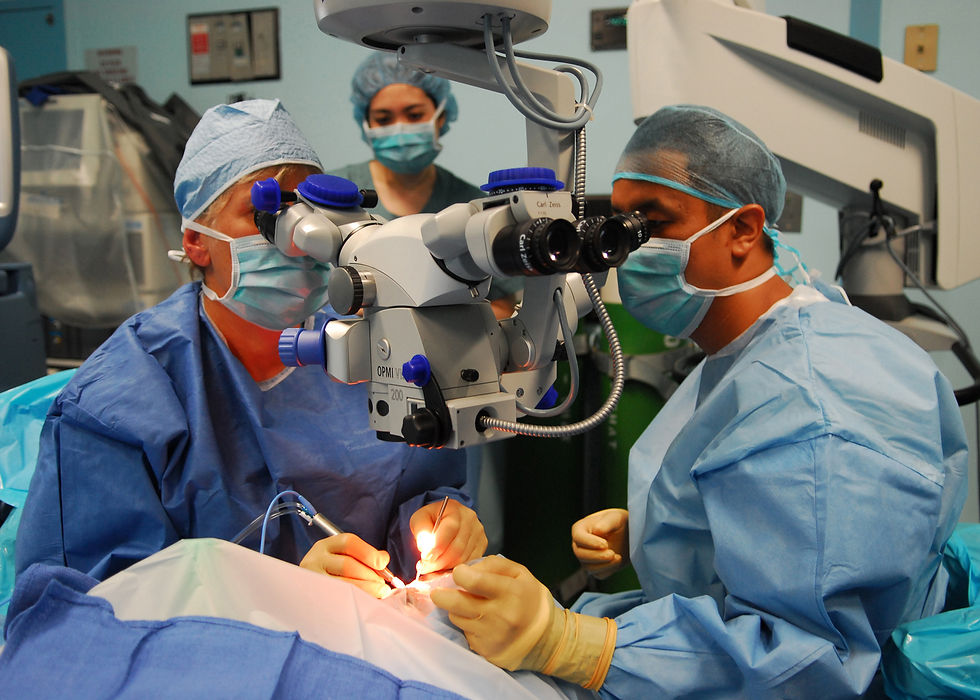
Treatment: Cataracts can be surgically removed and replaced with an artificial lens (intraocular lens or IOL). This is one of the most common surgeries that I perform, and is the most commonly performed surgery in the US. This outpatient procedure is highly successful in restoring vision. Unfortunately cataract surgery is often not widely available in underserved areas of the world, making this a major cause of treatable blindness.
5. Refractive Error

Refractive error is a common vision problem that occurs when the eye is unable to focus light properly onto the retina, resulting in blurred or distorted vision. They are the leading cause of vision impairment in the world. There are several types of refractive errors, including myopia (nearsightedness), hyperopia (farsightedness), astigmatism, and presbyopia.
Causes: Refractive errors are typically caused by the shape and size of the eye, which affect how light is bent (refracted) as it enters the eye. Common causes include:
Myopia: The eye is too long or the cornea is too curved.
Hyperopia: The eye is too short or the cornea is too flat.
Astigmatism: The cornea or lens has an irregular shape.
Presbyopia: Age-related loss of the eye's ability to focus on close objects.
Prevention: Preventing refractive errors is not always possible, as some are genetic or age-related. However, there are measures to reduce the risk include regular eye exams to correct any error early with glasses, contact, or refractive surgery, and reducing eye strain by practicing good eye ergonomics (20-20-20 rule to break from screens).

Treatment: Refractive errors can be corrected most commonly with eye glasses, either for reading or distance vision. Bifocals can help to treat both distances. Contact lenses are another common correction, worn directly on the eye. Refractive surgery (my specialty) is also an option, with procedures like LASIK, SMILE, and PRK to reshape the surface of the eye to focus better
Conclusion
Blindness is a significant and life-altering condition, and understanding its leading causes is essential for prevention and early intervention. Regular eye exams, a healthy lifestyle, and managing underlying health conditions are key strategies in preserving vision and preventing blindness. Advances in medical science and ongoing research offer hope for improved treatments and prevention strategies in the future, giving individuals at risk of vision loss reason to remain optimistic about their eye health. Ultimately, increasing awareness about the leading causes of blindness in the United States and globally can empower us to take proactive steps in safeguarding their vision.
Stay healthy my friends.
Comments